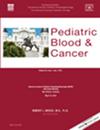Feasibility of transcranial Doppler to evaluate vasculopathy among survivors of childhood brain tumors exposed to cranial radiation therapy
Abstract
Background
The ability of transcranial Doppler (TCD) to detect asymptomatic cerebrovascular disease among childhood brain tumor survivors following exposure to cranial radiation therapy has not been established.
Methods
Survivors of childhood brain tumors, more than 3 years since diagnosis and exposed to greater than 30 Gy cranial radiation, underwent a history and physical exam, laboratory biomarkers of cerebrovascular disease (cholesterol, high-density lipoprotein cholesterol (HDL), low-density lipoprotein cholesterol (LDL), high-sensitivity CRP, hemoglobin A1C, apoprotein A, and apoprotein B), and a TCD evaluation of their cerebral arteries.
Results
In all 165 cerebral arteries from 13 patients (medulloblastoma = 10; germ cell tumor = 3; females = 5; mean age at diagnosis = 8.0 years; mean age at time of study = 20.9 years) were examined. Twenty-eight of 165 (17%) were considered abnormal by pre-specified criteria. Total 114 cerebral arteries from 13 patients were assessed for greater than 50% stenosis velocities. Arteries most likely to be considered abnormal included the distal bilateral vertebral arteries (right 38%, left 30%), basilar artery 30%, bilateral siphon internal carotid arteries (right 30%, left 23%), bilateral middle cerebral arteries (23% bilaterally), and bilateral anterior cerebral arteries (7% bilaterally). Two vessels had mean flow velocities consistent with 50% stenosis (1.8%). No vessels were found to have greater than 80% stenosis.
Conclusions
TCD may be a useful and practical tool to examine asymptomatic cerebrovascular disease among childhood brain tumor survivors after exposure to cranial radiation therapy. Posterior circulation vessels appear to have the highest burden of disease in this group of brain tumor survivors, a majority of whom had medulloblastoma.

 求助内容:
求助内容: 应助结果提醒方式:
应助结果提醒方式:


